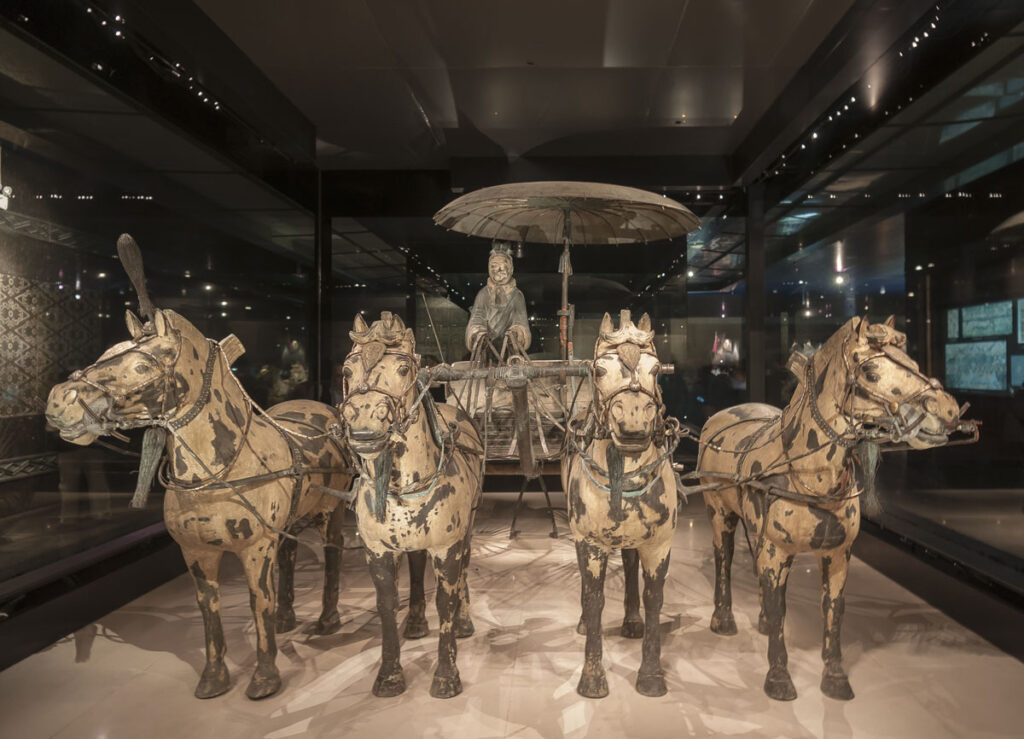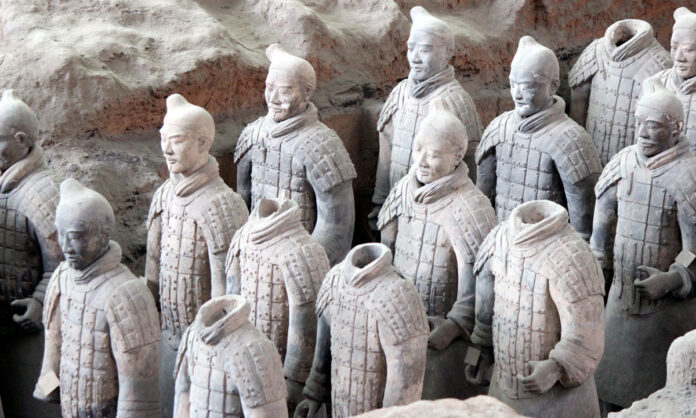In the heartland of China lies an archaeological wonder that has captivated the world for decades – the Terracotta Army. This silent army, standing guard over the tomb of China’s first emperor, Qin Shi Huang, is a testament to the grandeur and mystery of ancient Chinese civilization. In this blog, we delve into the fascinating history, the awe-inspiring craftsmanship, and the enigmatic purpose of the Terracotta Army, exploring the depths of one of the most remarkable archaeological discoveries in history.
Page Contents
The Rise of Qin Shi Huang
To truly appreciate the significance of the Terracotta Army, one must first understand the man behind its creation – Qin Shi Huang. Born in 259 BCE, Ying Zheng, as he was then known, ascended to the throne of the Qin state at the tender age of 13. Over the next two decades, he embarked on an ambitious mission to unite the warring states of China, ultimately succeeding in 221 BCE. This marked the birth of the Qin Dynasty and the beginning of the imperial era in China.
Qin Shi Huang, the self-proclaimed First Emperor, was not only a visionary ruler but also a controversial figure. His reign was characterized by unparalleled achievements such as standardizing weights and measures, introducing a uniform script, and commissioning the Great Wall of China. However, it was his obsession with immortality and the afterlife that led to the creation of one of the most astonishing archaeological wonders in the world – the Terracotta Army.
Read Also : Angkor Wat: Khmer Empire’s Temple City – A Timeless Marvel
The Quest for Immortality
The First Emperor’s relentless pursuit of immortality was fueled by a deep-seated fear of death. Legend has it that he sought the counsel of alchemists and magicians, hoping to discover the elixir of eternal life. Unfortunately, these efforts proved futile, and Qin Shi Huang died in 210 BCE during an inspection tour of his empire.
The grandiosity of the Terracotta Army was intricately tied to Qin Shi Huang’s belief in an afterlife. He envisioned a magnificent underground palace, a reflection of his earthly empire, where he could continue his rule in the afterlife. To safeguard this otherworldly realm, he ordered the construction of an army that would stand as eternal guardians – the Terracotta Army.

The Artistry of the Terracotta Warriors
The sheer scale and artistry of the Terracotta Army are nothing short of awe-inspiring. Discovered in 1974 by a group of farmers digging a well near Xi’an, the army consists of thousands of life-sized clay soldiers, each meticulously crafted with distinct facial features, hairstyles, and armor. The attention to detail is staggering, as no two soldiers are alike, showcasing the incredible skill of the ancient artisans.
The soldiers are arranged in battle formation, with infantry, archers, cavalry, and chariots strategically positioned to defend the emperor in the afterlife. The level of craftsmanship not only reflects the technological prowess of the Qin Dynasty but also serves as a snapshot of the military attire and weaponry of the time.
Interestingly, the vibrant colors that once adorned the warriors have faded over the centuries, leaving behind the natural terracotta hue. However, the original brilliance of the pigments used, including bright greens, blues, purples, and reds, has been revealed through meticulous restoration efforts, offering a glimpse into the army’s former glory.
The Mysteries of the Terracotta Army
While the Terracotta Army has answered many questions about ancient China, it has also given rise to numerous mysteries that continue to baffle archaeologists and historians.
One of the lingering enigmas is the absence of any written records or historical accounts detailing the construction of the army. The meticulous planning and execution of such a monumental project would undoubtedly have left a significant mark on the historical record. The silence of ancient texts on the matter has led to speculation and theories about the secrecy surrounding the project, with some suggesting that those involved were sworn to silence, ensuring the emperor’s grand vision remained shrouded in mystery.
Another intriguing aspect is the level of sophistication in the terracotta craftsmanship. The artisans not only captured the physical attributes of the soldiers but also imbued them with a sense of individuality. The question arises: How did these ancient craftsmen achieve such a high level of realism, considering the limited tools and technology available at the time?
Additionally, the purpose of the Terracotta Army remains a subject of debate. While the prevailing theory suggests they were created to accompany Qin Shi Huang in the afterlife, some scholars propose alternative explanations. Some argue that the army served a more symbolic purpose, representing the emperor’s military might and his ability to control such a vast force, even in death.

Preservation and Conservation Challenges
Preserving and conserving the Terracotta Army has been a monumental task since its discovery. The underground pits where the warriors were found presented unique challenges, including the risk of further deterioration due to exposure to air and environmental factors. The initial excavation itself posed a threat, as sudden exposure to air caused the painted surface of the warriors to peel and fade.
To combat these challenges, a combination of advanced technologies and careful restoration efforts has been employed. Climate-controlled environments have been established to protect the warriors from fluctuations in temperature and humidity. The use of 3D printing technology has allowed for the recreation of damaged or missing parts, ensuring the army remains as close to its original form as possible.
Read Also : The Acropolis of Athens: Ancient Greek Architectural Brilliance
The Legacy of the Terracotta Army
The discovery of the Terracotta Army has not only shed light on the grandeur of the Qin Dynasty but has also become a symbol of ancient Chinese civilization and its enduring mysteries. The site, now a UNESCO World Heritage site, attracts millions of visitors annually, offering a glimpse into the rich history and cultural heritage of China.
Beyond its archaeological significance, the Terracotta Army serves as a poignant reminder of the lengths to which individuals, even powerful rulers, will go in the pursuit of immortality. Qin Shi Huang’s vision of an eternal army to guard him in the afterlife reflects a deeply ingrained cultural belief in the continuity of life beyond death.
In conclusion, the Terracotta Army stands as a testament to the ambition, artistry, and mysteries of ancient China. As we marvel at the rows of stoic soldiers, frozen in time, we are transported to an era where emperors dared to defy mortality, leaving behind an enduring legacy that continues to captivate and mystify the world.


